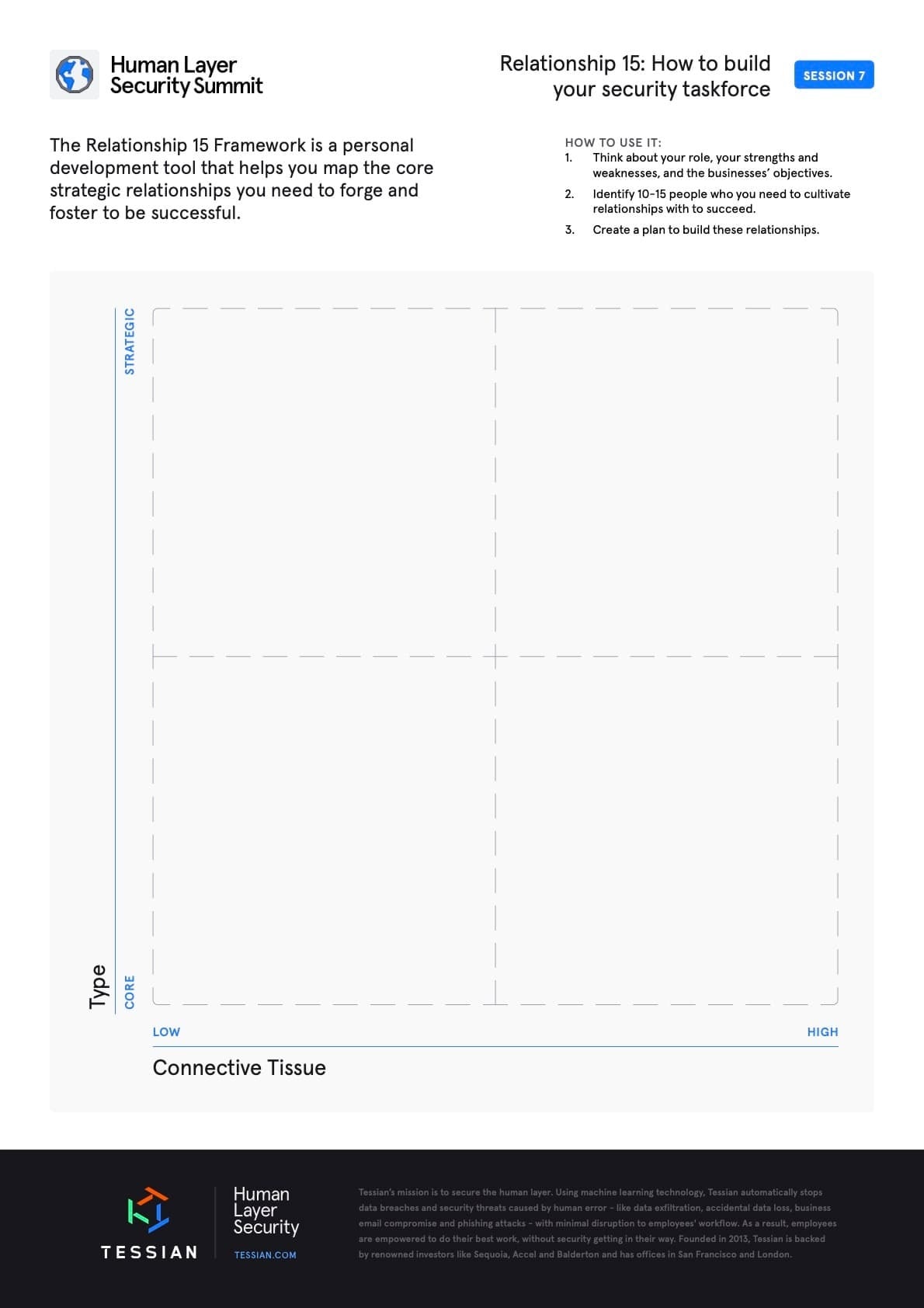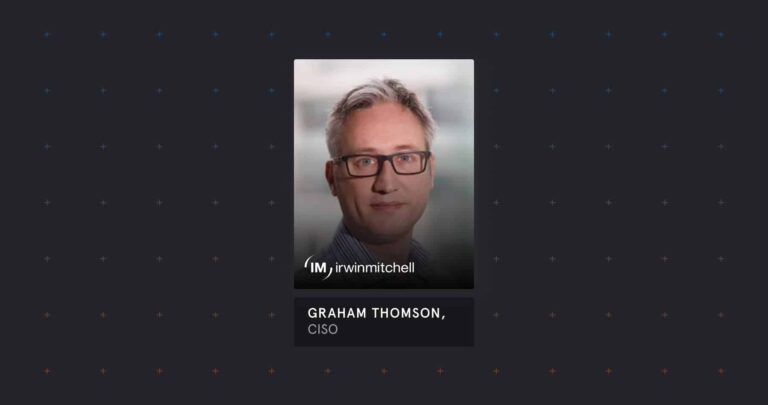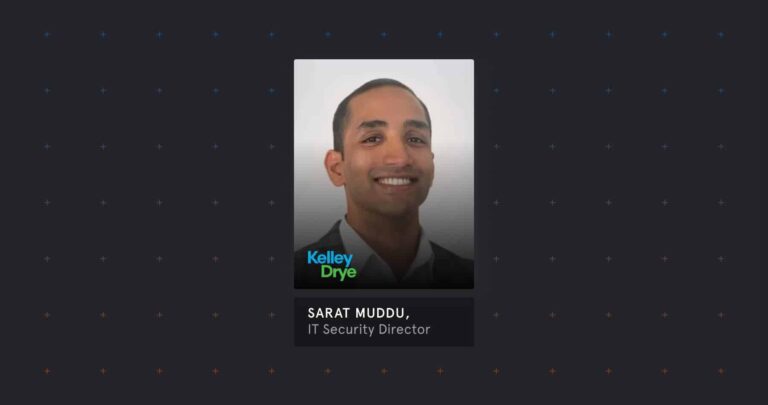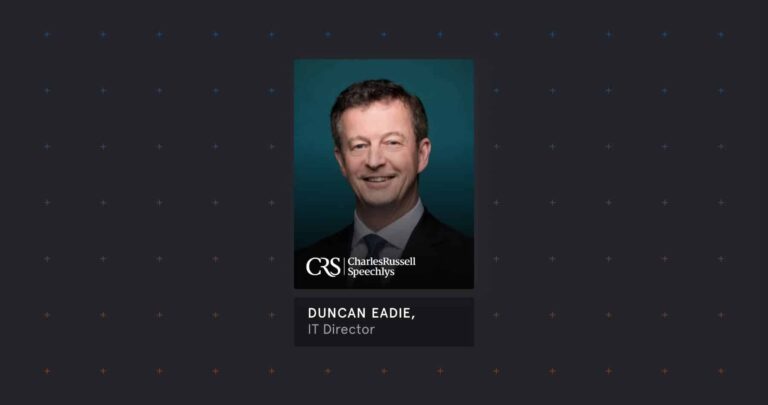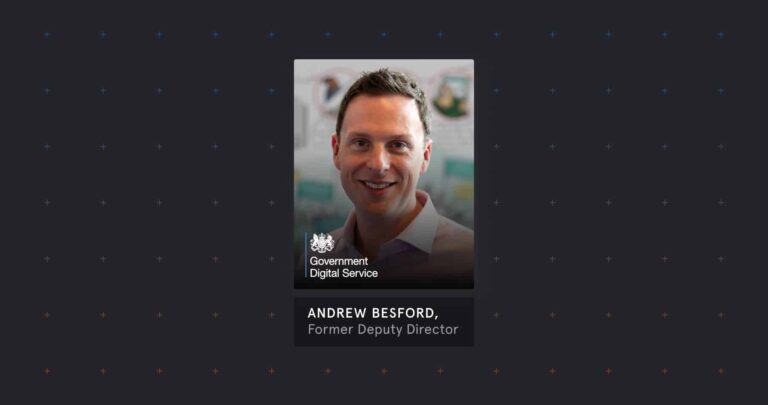The role of the CISO and other security professionals has changed. Instead of focusing purely on IT and infrastructure, security leaders are now responsible for communicating risk, enabling individuals and teams, and influencing change at all levels of the organization.
But, that’s easier said than done…especially when research shows less than 50% of employees (including executives) can identify their CISO.
The key? Building relationships with the right people.
We have a framework that can help you not just build the right relationships, but also support your overall communication strategy. Introducing Relationship 15.
What is the Relationship 15 Framework?
The Relationship 15 Framework is a personal development tool that helps you map the core strategic relationships you need to forge and foster to be successful.
“This framework gives you the opportunity to be intentional about the relationships you want to build and be proactive in making connections versus repairing broken relationships. This helps build trust, which is essential for security leaders. You must build trust with the rest of the business to succeed.”
Patricia Patton
Human Capital Strategist and Executive Coach
How can this framework help security leaders?
As we’ve said, the role of the CISO has evolved. But, in many organizations, they still don’t have a seat at the table.
The question is: who can help get you there? Who can help boost your credibility, bolster your influence, and support your key initiatives?
To name a few…CEOs, GCs, CFOs, and the board. The list goes on. But credibility, influence, and support have to be earned, and you have to leverage people outside of your cybersecurity bubble.
Patricia Patton – the former Global Head of Professional Development at Barclays and Executive Coach at LinkedIn – has decades of experience helping business leaders and politicians forge better relationships.
To her, it’s easy to see why CISOs and other leaders in the industry would leverage a framework like Relationship 15.
“This framework gives you the opportunity to be intentional about the relationships you want to build and be proactive in making connections versus repairing broken relationships. This helps build trust, which is essential for security leaders who absolutely must build trust with the rest of the business,” she said.
3 steps to map out your Relationship 15
- Look inwards. Think about your role, your strengths and weaknesses, and the businesses’ objectives. Before you move on to step two, pause and embrace the notion that relationships really matter. The goal of this exercise isn’t to build perfect relationships overnight, but to help you align, influence, and succeed in partnership with others.
- Identify 15 people who you need to cultivate relationships with to succeed. Remember, though, that “success” is multi-faceted. There are people who will help you succeed, people who will help your team succeed, and people who will help the business succeed. We recommend choosing five people for each of these three categories (hence the name Relationship 15!). Note: these people shouldn’t be limited to your department, your sphere of influence, or even your organization. And, don’t forget to include your peers and mentors.
- Create a plan to build these relationships. Scheduling regular catch-ups and creating seamless feedback loops will both help, but you have to be intentional. These relationships aren’t purely transactional and it’s not all about you. Both parties need to show up, demonstrate their value, share their expertise, listen to understand, and respond empathetically. Top tip: Consider your own communication style and take the time to understand everyone else’s. This free assessment is a good place to start.
Looking for more advice? We share 16 tips from security and compliance leaders about getting buy-in in this article: How to Prove the Value of Cybersecurity.
Who’s in your Relationship 15?
At Tessian Human Layer Security Summit on March 3, an incredible panel of women discussed Relationship 15 in depth. We asked who they’d include in their security taskforce to help influence change, reduce their organization’s risk, and drive business objectives.
Here’s what they had to say.
Gaynor Rich, Global Director of Cybersecurity Strategy and Transformation at Unilever
- Data Privacy Officer(s)
- Chief Compliance Officer(s)
- Audit and Risk Manager(s)
- The Board
- Executives and key stakeholders within Unilever’s supply chain
- Other men and women in similar roles
Annick O’Brien, Data Protection Officer and Cyber Risk Officer
- Chief Information Security Officer
- Heads of Departments across the organization
- HR Director(s)
- Internal communications team(s)
Now, It’s you (and your teams!) turn…
Who within and outside of your organization can you build a relationship with to ensure:
- You succeed
- Your team succeeds
- The business succeeds
Carve out some time to fill out the Relationship 15 Framework template and start sketching out a roadmap to strengthen your connective tissue with each person.
Think about the impact. If your team of 5 each identifies 15 people, you’ll have a network of 75 people to learn from and lean on.
Have you found this useful? If so, share your Relationship 15 with us on LinkedIn and make sure to pass on the template to your peers.









